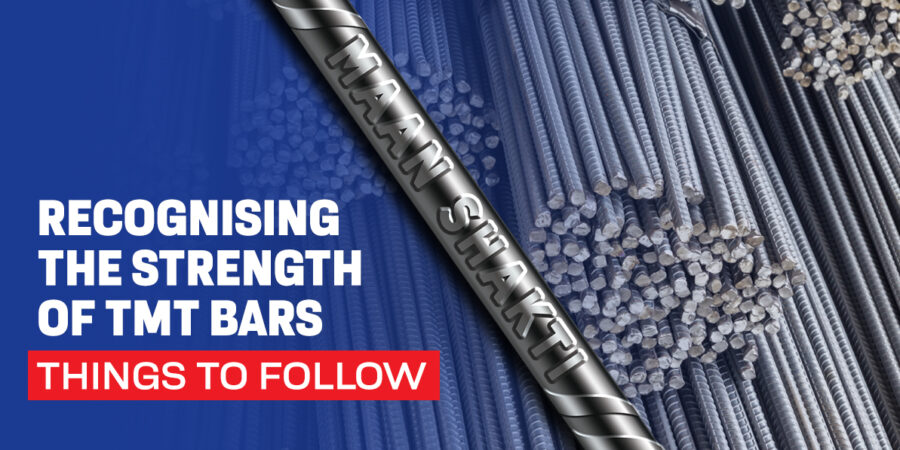Solid ductility and high tensile strength make TMT bars an integral part of today’s construction domain. With these outstanding qualities, TMT steel bars have become an invaluable addition to construction projects.
However, newcomers in this domain often find themselves confused about figuring out the TMT bars.
Since the TMT bar’s role is paramount in today’s construction world, you should understand a few things to identify the TMT Bar West Bengal. If structural integrity is the prime focus for your construction team, you are in the right place.
TMT bars are available in different grades, such as Fe-415, Fe-500, Fe-600, and Fe-550. So, it becomes more important to first identify the strength to choose quality thermo-mechanically treated bars.
Begin Your Journey to Identifying Quality TMT Bars
When it comes to ensuring the safety and durability of your construction projects, there’s no point ignoring quality TMT bars. After all, quality thermo-mechanically treated bars offer strength and resilience. They are high-strength reinforcement bars.
Remember, TMT bars come with a softer inner and strong outer core. So, the best way to understand their quality is by assessing these attributes:
Physical Traits
Considering their physical qualities, selecting bars with smooth surfaces is imperative. So, look for bars that don’t have any cracks. The rebending test will give you a better understanding of the trait. There shouldn’t be any noticeable defects. Lastly, quality bars offer uniform rib patterns.
Assessing the Bar’s Ductility
Ductility is a property that makes the TMT bars a valuable addition to your construction project. Because they are ductile, you can bend them easily. That means they are suitable for recent projects. To assess its ductility, you can undergo the bend and rebend test.
Bending and rebending tests are pivotal to assessing the strength of TMT bars. In a quality TMT bar, the strength will remain unaffected. On the contrary, the rending test measures the impact of strain ageing. You may see embrittlement occurring right when nitrogen is diffused.
It occurs with cold deformation. Note that quality bars bend at 180 degrees. Most TMT bar passes this test. However, the issue may occur when assessing the cracks and fractures. While they might be visible with bare eyes, the rebending test gives a better overview.
In the rebending test, your selected bar should bend at least 135 degrees. You need to keep it at 100 degrees boiling for half an hour. After this, you need to keep it for cooling. Soon after the bars are cooled, you need to twist the bars to 157.5 degrees. If it doesn’t show signs of ruptures or cracks, it’s a quality product.
Tensile Strength
Considering their strength, several types of TMT bars are available: Fe 415, Fe 500, and Fe 550. So, depending on your requirements, you need to select the tensile strength of the bar. The type of TMT bar depends on your construction. For example, if the construction site is free from seismic risks, you can use Fe 500 grade. Furthermore, Fe 415 grade bars are used for heavy-duty projects.
Assessing Corrosion Resistant
Corrosion-resistant materials can sustain modern construction. That’s the prime reason why TMT steel bars are praised on numerous counts. TMT bars, according to contractors, are resistant to corrosion. However, steel can corrode if chloride ions are present. Fortunately, TMT bars witness humidity in coastal regions such as Kolkata (West Bengal).
You may opt for chemical testing to evaluate the chemical composition of the bar. You need to use a 50- to 60-mm length bar cut via abrasives. Such bars are polished and grounded on one of the sides. Then, it gets examined in the spectrometer. This test may take around 10 to 15 seconds.
Get to Know about Its Manufacturing Process
Coke, coal, iron ore, and dolomite are common raw materials manufacturing TMT bars. So, when it comes to finding the best bars from the market, never neglect to ask for their manufacturing. Always ask about its manufacturing process while discussing your requirements with the dealer. Ask about the micro-alloying elements used in the process. Usually, vanadium, boron, and niobium are micro-alloying elements used to manufacture TMT bars.
Wrapping up
In a country like India, sustainable real estate practices are becoming important. With that, TMT bars have become a quintessential need for the 21st-century construction domain.
TMT bars offer superior ductility, fire and corrosion resistance qualities, and high tensile strength. So, they have become a valuable addition to the construction world.
So, this post compiles the best way to identify TMT steel bars and their quality. Now that you understand the steps to assessing the bar’s quality, why are you waiting here? Select the best TMT steel bars available in the market and ensure optimal performance and structural integrity.
Find out the best TMT bars from the most experienced supplier in the market. Select the best TMT steel bars from the market and carry forward your construction project accordingly.


